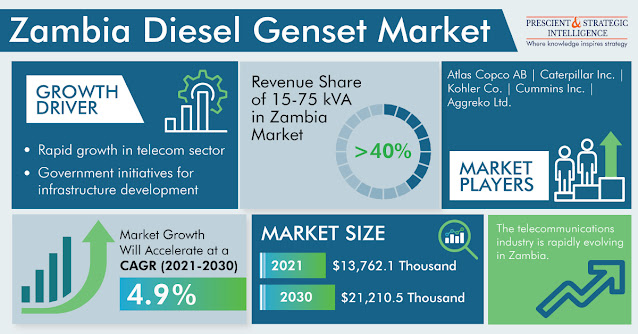In 2021, the South Africa DG set market accounted for $113,289.3 thousand in revenue, which is projected to reach $159,129.0 thousand by 2030, advancing at a 3.9% CAGR from 2021 to 2030. This is owing to the rapid expansion in the manufacturing and construction industries, coupled with a dire demand for high- and medium-power DG sets from the commercial sector. The expansion of such industries is particularly owing to the macroeconomic development, government reforms to encourage domestic and foreign investments, and increasing capital expenditure (CAPEX).
Due to the lower operating costs and less dependence on a single fuel, hybrid generators are becoming more and more recognized. Moreover, the persistent power cuts in the nation have not only caused traffic delays but also lowered quarrying activities. By ensuring a regular and frequent power supply, DGs have a prolific role in this industry, especially that have unreliable grid connectivity in states. All of these factors will together offer lucrative opportunities for the expansion of this market.
The major share in the South Africa DG set market, of 40%, in 2021 was held by 15–75 kVA, when segmented by power rating. This is credited to the growing adoption of gensets of this power rating in commercial and residential places, such as small offices, retail outlets, and telecom towers. Furthermore, power failure is often attributed to improper distribution channels and significant energy losses from the grid.
The competitors in the South Africa DG set market are taking various measures for achieving dominance. For example, YANMAR established a relationship with Vert Energy Group in December 2020 to become the exclusive distributor of YANMAR’s industrial engines in South Africa and adjacent countries, succeeding Prodist. The major players in this market include GENERATOR BOYS, Aksa Power Generation SA (Pty) Ltd., Kohler Co., Jubaili Bros, Multilec Generator Services, Algen Power Generation (PTY) Ltd., Caterpillar Inc., PacB Power Solutions, Aggreko Ltd., Cummins Inc., and Atlas Copco AB.
Thus, the government reforms for infrastructure development, along with the growth in the manufacturing and construction industries, are propelling the market.














